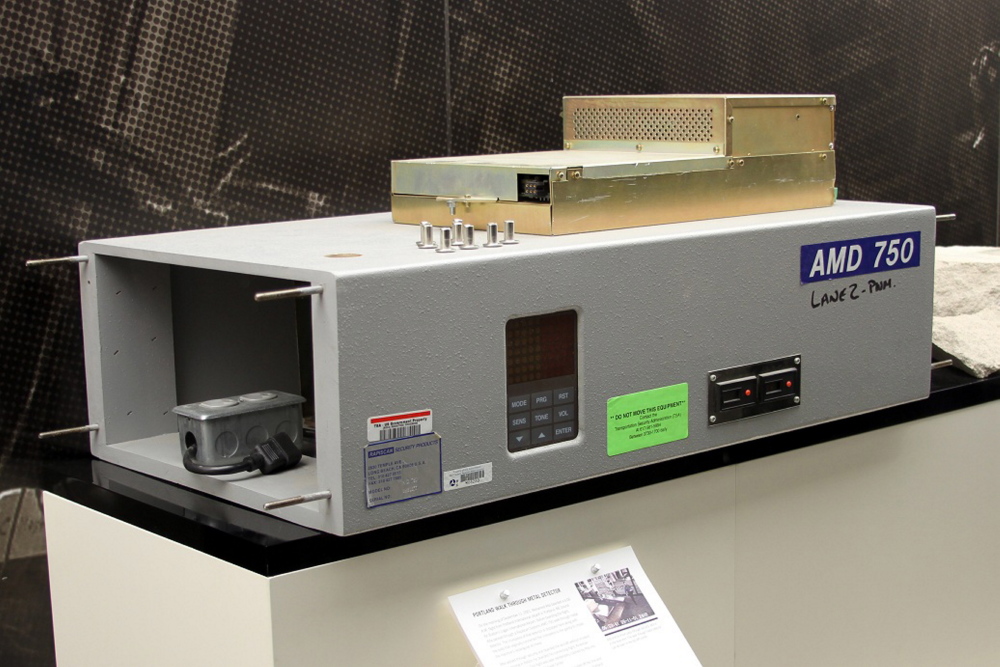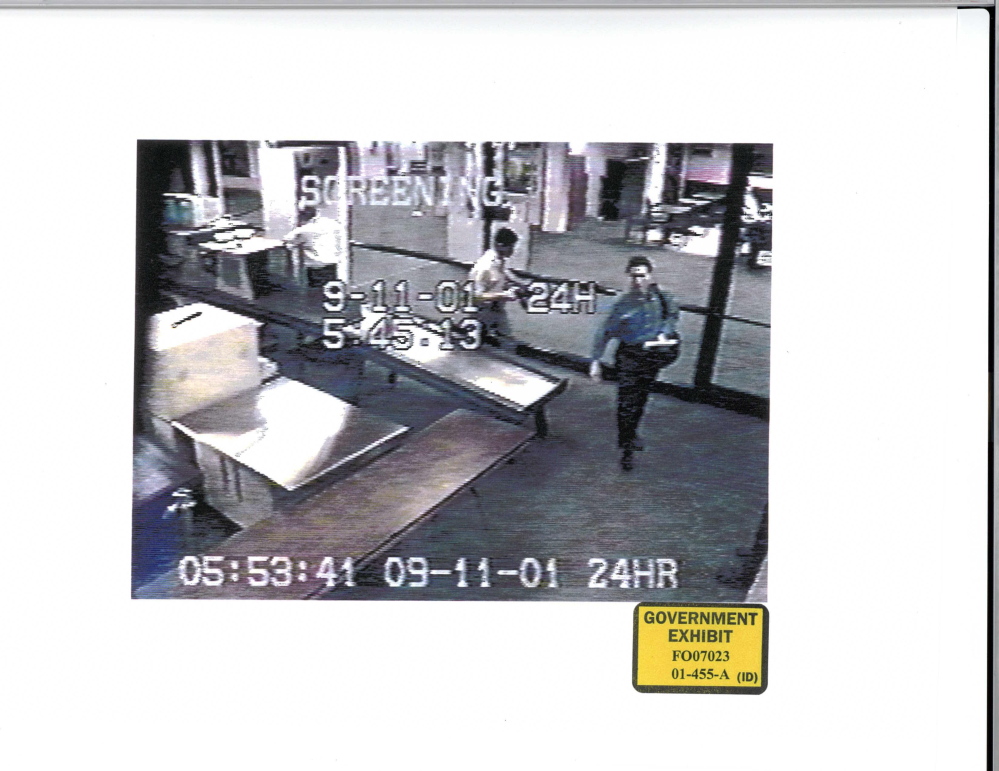Remnants of the World Trade Center and reminders of the 2,983 people killed in the terrorist attacks of Sept. 11, 2001, stirred painful memories and emotions Thursday at the dedication of a memorial museum in New York City.
Meanwhile, another small piece of the story – a piece of an airport security scanner from the Portland International Jetport – is part of a small rotating museum exhibit in Virginia that has a much more limited audience and is intended to evoke a slightly different emotion: Never again.
The walk-through metal detector that screened Mohamed Atta and Abdulaziz al-Omari, two hijackers who flew from Portland to Boston on the morning of the attacks, is displayed periodically in a small museum at the Arlington headquarters of the Transportation Security Administration. The scanner and other artifacts, including a piece of the World Trade Center, tell the story of how and why the agency was created.
“It helps us remember we need to remain vigilant and continue the mission,” said Michael Smith, the agency’s historian and the curator of the first-floor museum. “My boss has said, ‘If you’re having a bad day every once in a while and you’re wondering why you do what you do, just come down here.’ ”
Atta and al-Omari caught an early flight from Portland to Boston, where they joined other hijackers boarding one of the jets that soon after slammed into the World Trade Center towers.
Investigators have never explained why the two men began their day in Portland, although it was widely believed that they wanted to keep a distance from the other hijackers to avoid raising suspicion.
A now-famous security camera image shows the two men walking through a screening checkpoint at the Portland airport. The metal detector they had just passed through is visible in the background. A copy of the photo is part of the Transportation Security Administration exhibit.
“We were the only airport to catch them on CCTV” security cameras, said jetport Manager Paul Bradbury, who was the airport’s engineering manager at the time of the attacks. Other airports didn’t get clean images of any of the hijackers.
Federal investigators quickly linked the two men to the hijackings and focused part of the investigation on Portland. They also quickly decided to remove the walk-through scanner and other equipment from the Portland security checkpoint. In all, investigators removed two walk-through metal detectors and two scanners that were used to X-ray carry-on luggage.
“The first thing they wanted to do was just get it off the line because people were very curious,” said Smith, the agency’s historian. “Everyone was inundating (the investigators): ‘Can we see it? Can we see it?’
“Then the question became, did it malfunction? Did something go wrong?” he said.
It wasn’t clear at the time whether the hijackers had guns or bombs that the scanners should have detected. They didn’t. They were armed with box cutters, which were not even prohibited on planes at the time.
“The machines were working fine. It’s just that aviation security at that time isn’t what we have today,” Smith said. Modern scanners can detect more threats, including non-metallic weapons.
Bradbury, the airport manager, believes that fact is often misunderstood.
“There was no screening mistake on 9/11. It was a hole in our process and system, not a hole in the screeners,” Bradbury said. “Nothing got through a metal detector that wasn’t allowed.”
Bradbury said he remembers the intense scrutiny at the jetport after the attacks. He didn’t know that the equipment from Portland became part of the agency’s historical collection.
The metal detector and other screening equipment were owned at the time by Delta Air Lines, which offered to donate the equipment to the agency in 2005.
The overhead section of the walk-through screener became a centerpiece of the Sept. 11 exhibit, which was most recently on display from 2012 to 2013 before being rotated out for a different exhibit. It will be back on display this summer through the Sept. 11 anniversary.
The Transportation Security Administration hasn’t had enough space to display all of the equipment from Portland, Smith said.
While the agency did not exist when the scanner was last used – it was created in response to the attacks – it now has 50,000 employees. The administrative and field agents who pass through headquarters are the primary audience for the exhibit, which is not open to the public without special invitation.
Smith said he looks forward to seeing the new public memorial museum in New York, as painful as the visit is certain to be.
In the meantime, pieces of Portland’s airport are helping to ensure that some key people in Virginia don’t forget, he said.
“TSA was created to make sure there would never be another 9/11,” Smith said, “and so the donation was a reminder of what happened and why TSA does what it does.”
John Richardson can be contacted at 791-6324 or at:
jrichardson@pressherald.com
Send questions/comments to the editors.




Success. Please wait for the page to reload. If the page does not reload within 5 seconds, please refresh the page.
Enter your email and password to access comments.
Hi, to comment on stories you must . This profile is in addition to your subscription and website login.
Already have a commenting profile? .
Invalid username/password.
Please check your email to confirm and complete your registration.
Only subscribers are eligible to post comments. Please subscribe or login first for digital access. Here’s why.
Use the form below to reset your password. When you've submitted your account email, we will send an email with a reset code.